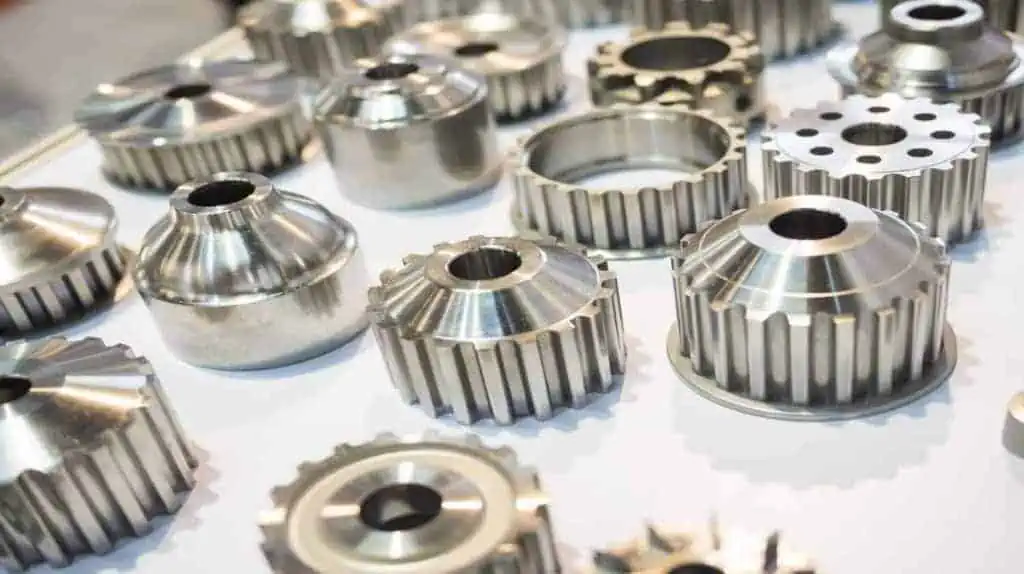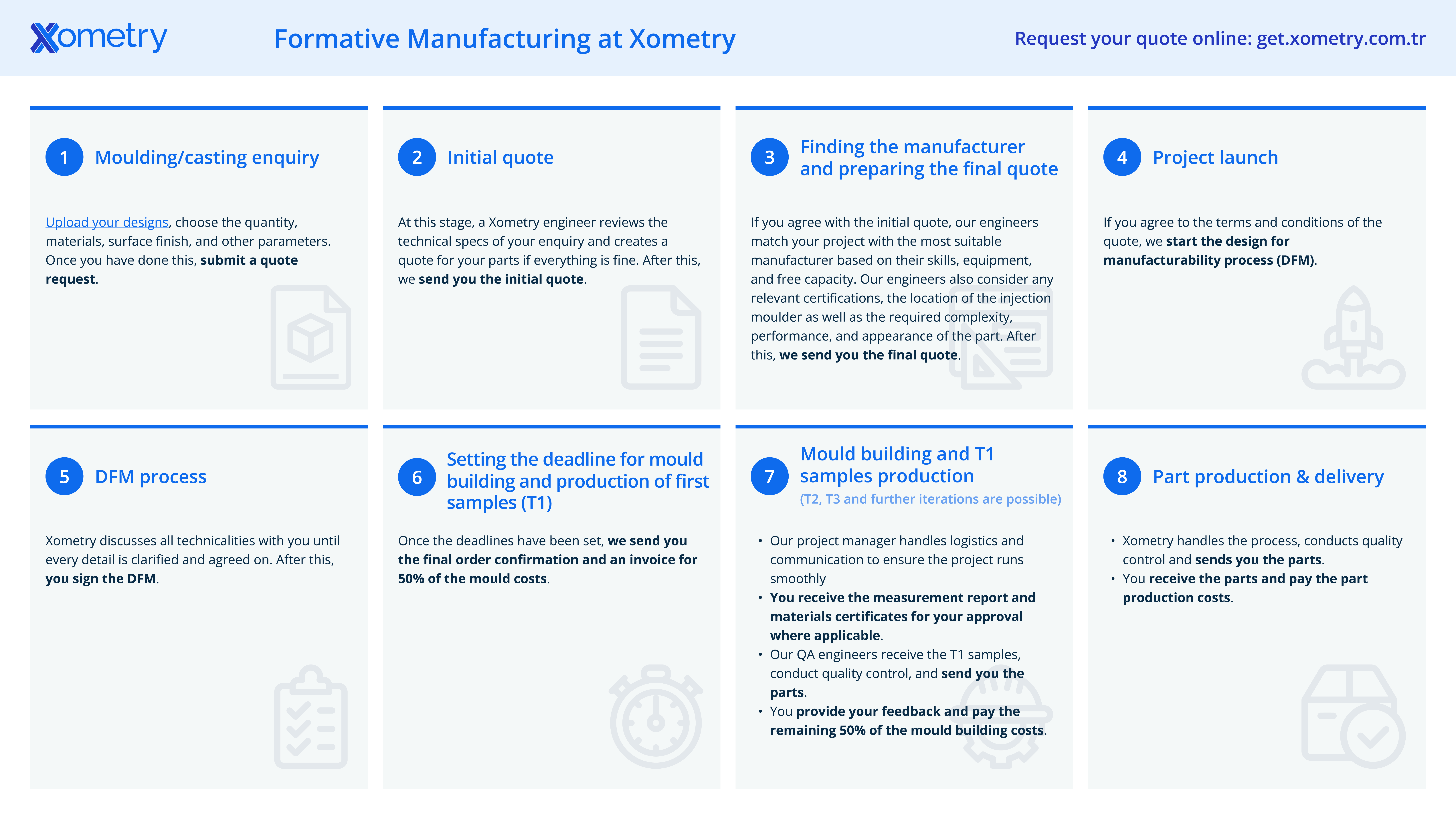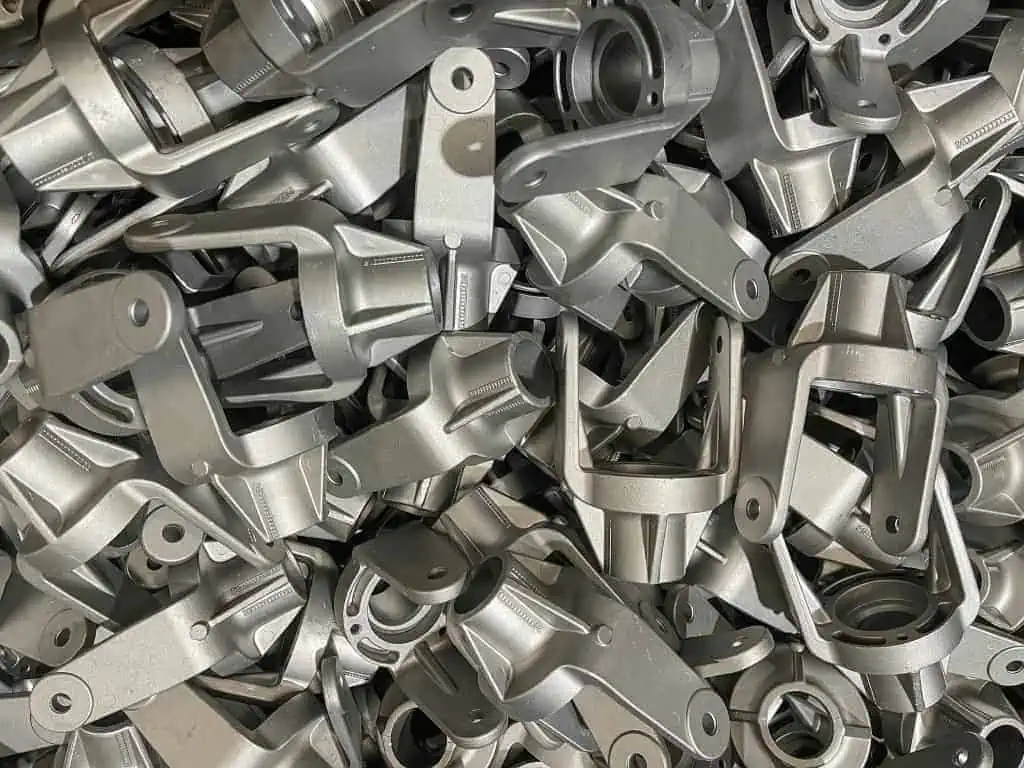Die Casting Services
- Hot Chamber & Cold Chamber Die Casting
- Tool manufacturing in up to 12-20 days
- Ideal for serial production of metal parts
- ISO 9001:2015 certified
Start A New Die Casting Quote
STEP | STP | SLDPRT | STL | IPT | 3DXML | CATPART | PTC | PRT | SAT | PDF
You can also upload your technical drawings
Process of Die Casting
Xometry works with partners with the latest die casting technology to deliver high quality, on-demand parts. Our typical tolerance accuracy ranges from ±0.0762 mm to ±0.127 mm for aluminium and zinc, depending on customer specifications.
Hot chamber casting, also referred to as gooseneck casting, is the most ubiquitous die casting process. In this process, the injection mechanism’s chamber is submerged in molten metal and the “gooseneck” metal supply structure guides the molten metal into the die cavity.
Cold chamber die casting is commonly employed to reduce machine corrosion. The liquified metal is loaded directly into the injection setup, removing the need to submerge the injection mechanism into the molten metal.

Ordering Cast Parts: How It Works

Advantages of Die Casting with Xometry
Rapid Turnaround
We offer fast mould lead times: in as fast as 12 business days for rapid tooling and up to 20 days for production tooling.
Serial Production
Ideal for the production starting from 100 parts.
Endless Options
Several different materials for dozens of combinations of finishes, tolerances and markings. We also offer material certifications, inspections and measurement reports.
In-house quality control
Strict in-house QC to ensure your parts are flawless. Our processes are ISO 9001:2015 certified.
Die Casting Materials
Die casting materials play a pivotal role in manufacturing precision parts. They are typically metals and alloys, such as aluminium, zinc, and magnesium, chosen for their strength, durability, and suitability for specific applications. Here is the list of materials offered at Xometry Türkiye.
Aluminium:
- Aluminum 46100 / ADC12 / A383 / Al-Si11Cu3
- Aluminum 46500 / A380 / Al-Si8Cu3

Die Casting Fundamentals
For high-volume production of comparatively complex metal parts, die casting is the most suitable manufacturing process. Die cast parts are manufactured using steel moulds that resemble those utilized in injection moulding. Instead of plastics as used in injection moulding, die casting involves metals with low melting points such as zinc and aluminium. Die casting is a popular option due to its accuracy, reliability, repeatability, and versatility.
In the die casting process, high pneumatic pressure or hydraulic pressure forces molten metal into a steel mould or die. These moulds and dies can produce metal parts with complex geometries. The die casting process produces most of the metal parts involved in all casting processes.
 Europe
Europe  United Kingdom
United Kingdom  Türkiye
Türkiye  USA & Canada
USA & Canada  Asia
Asia  الشرق الأوسط
الشرق الأوسط 
